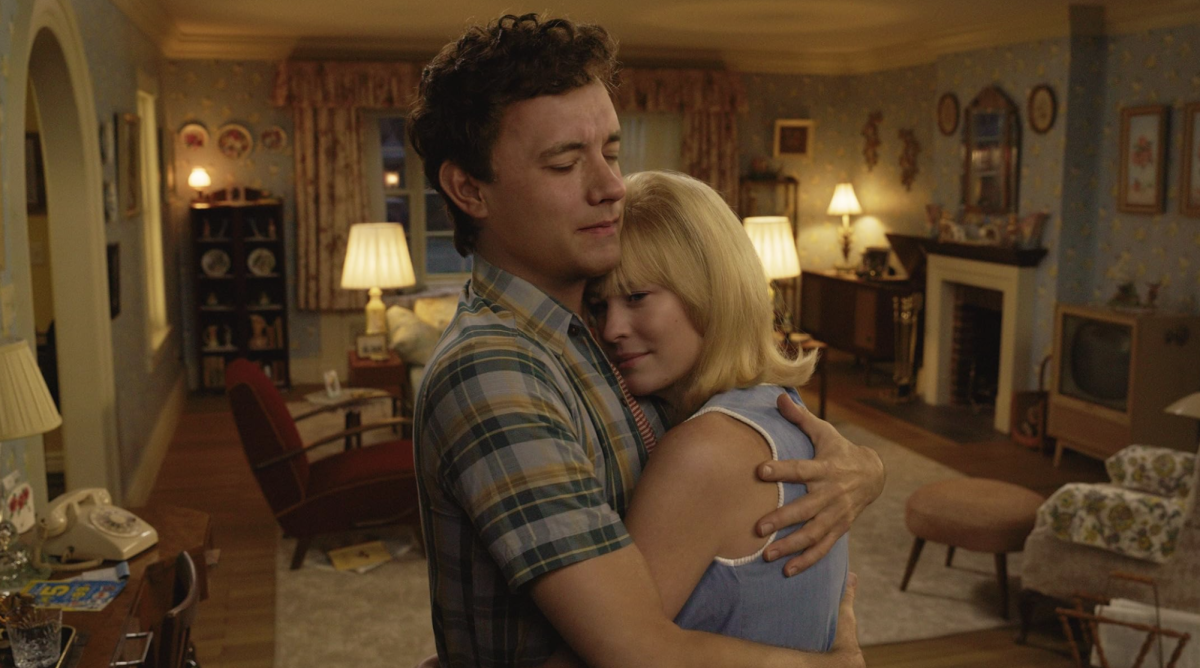Director Robert Zemeckis took former “Forrest Gump” stars Tom Hanks and Robin Wright off the high shelf, dusted them off and stuck them right back in some Gump parallel universe. He accomplished everything and absolutely nothing in “Here,” which was released on Nov. 1. While undertaking the ambitious concept of showing an entire film through one camera frame, the experiment fails to elicit the intended reaction and reads as an underwhelming sitcom-stage production hybrid.
“Here” follows a plethora of stories and people from the age of the dinosaurs until the present day, all connected by one location through one frame. A number of otherwise completely unrelated plotlines pay homage to the different eras of American history while the central one, featuring Richard (Tom Hanks) and Margaret Young (Robin Wright), showcases the totality of the human experience, including marriages, births and funerals.
For a movie primarily focused on the passage of time, the chosen release date is unstrategic. After the success of “We Live in Time,” “Here” feels like its ugly cousin who doesn’t get off the couch. While “We Live in Time” used the nonlinear timeline to its advantage, “Here” shows how it can lead to underdeveloped characters, irrelevant plotlines and a dry-faced audience.
Surprisingly, it’s not the literal one-dimensionality of the film that makes it fall flat but the lack of anything else, from the screenplay to the performances supporting it. However, the singular camera framing, while not the worst part of the film, doesn’t do it any favors.
Despite the deceptively strong cast, with the likes of Paul Bettany and Kelly Reilly, the performances come off as much too theatrical for film. Instead of the lack of change in framing allowing the actors to demonstrate their range and character, it exposes the weakness in their performances. However, the screenplay’s abundance of artificially dramatic turning points and cliche one-liners didn’t give the actors much to work with. Every should-be serious moment reads unnaturally and lends itself to over-acting.
Putting such strict limits on visuals leads to a script with too much telling and not enough showing. Everything about the characters’ lives outside of one room must be revealed through conversation, and many times a character goes off on a long tangent or backstory to the detriment of everyone’s attention span.
Aside from weaknesses in script and performance, many aspects of post-production, such as the slideshow-presentation-like transitions and unsettling de-aging CGI, further the film’s out-of-touch quality. The film ends in a half-baked copy of “The Notebook,” as Wright’s character temporarily overcomes dementia to finally appreciate the home where so many memories were made while several plotlines fail to receive any closure.
The ending reveals the house that audiences have only thus far seen the inside of, all to the ultimate revelation that the movie failed to accomplish anything significant or even entice a few cheap tears. Besides the intriguing framing concept, nothing sets the film apart, and soon the audience will want out of that house just as much as Wright’s character does.
1½ Benjamin Franklins out of 5













